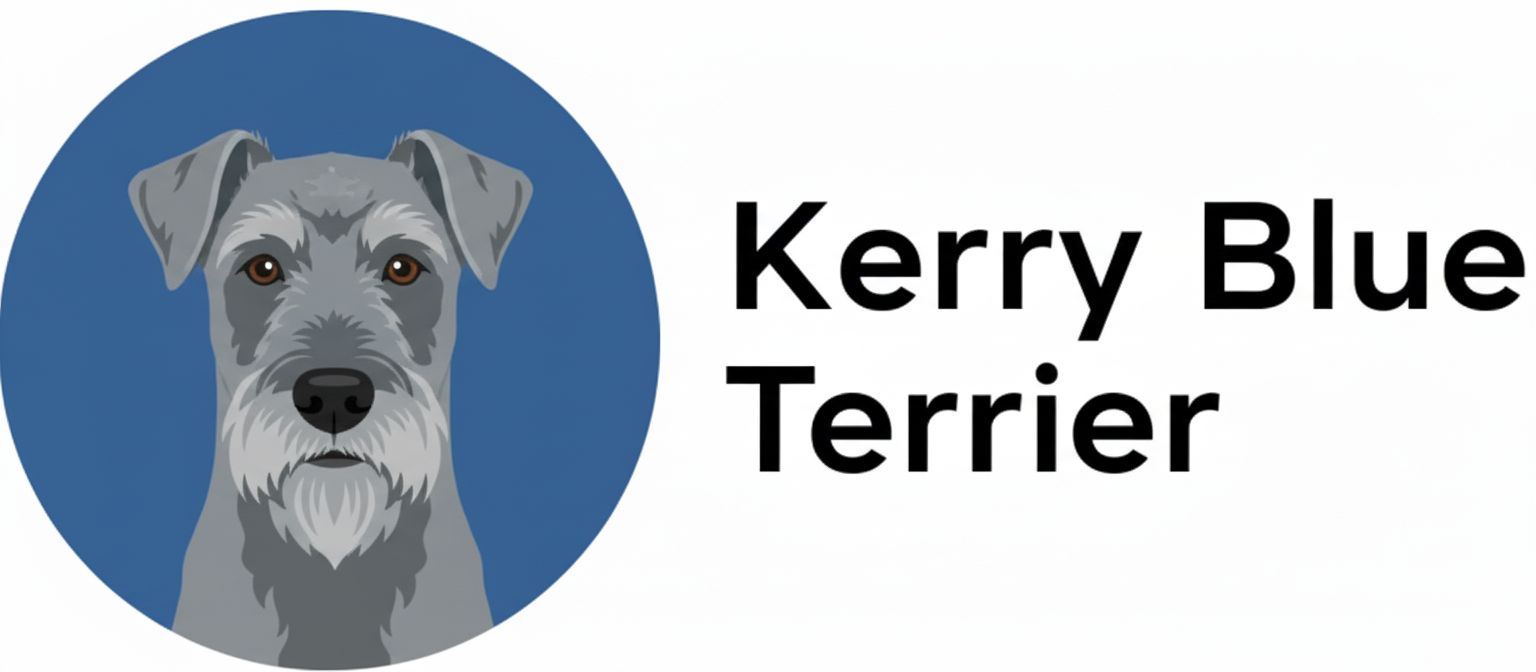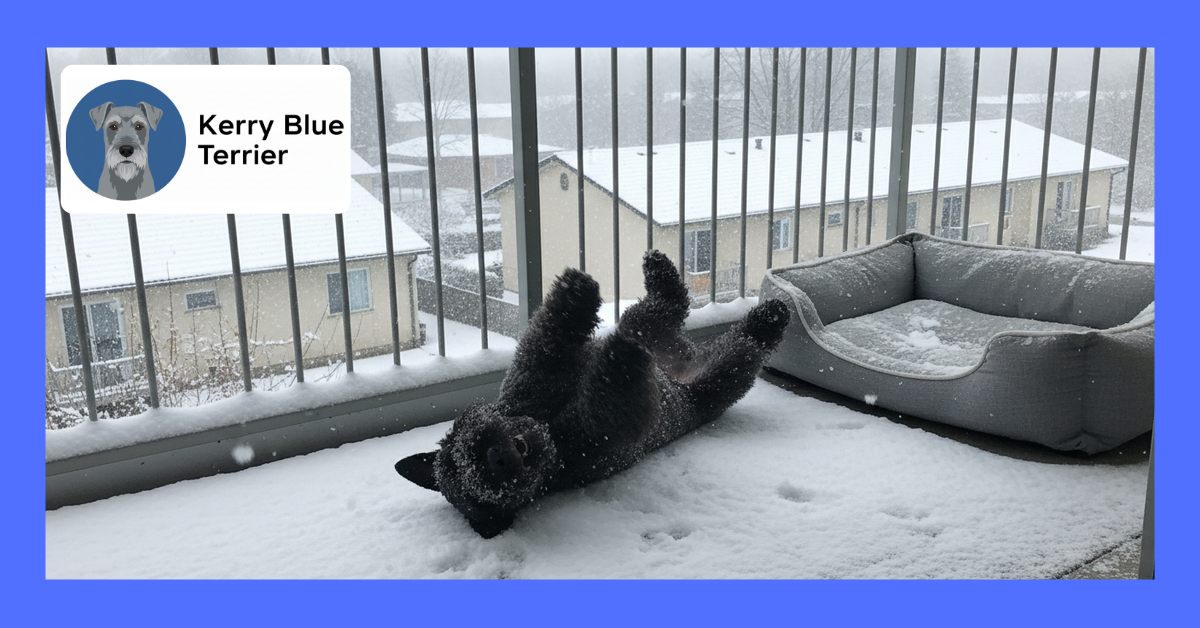Did you know that Kerry Blue Terriers possess one of the most sophisticated olfactory systems in the canine world, capable of detecting scents at concentrations nearly 100 times lower than humans can perceive? This remarkable ability makes them exceptional candidates for scent tracking activities that challenge their minds and satisfy their natural hunting instincts.
Kerry Blue Terrier scent tracking training is a structured activity where dogs learn to locate specific odors using their advanced sense of smell, providing mental stimulation while strengthening the human-dog bond through positive reinforcement methods.
Whether you’re seeking to enhance your Kerry Blue’s behavioral balance, explore competitive nosework, or simply provide meaningful enrichment, this comprehensive guide will equip you with proven training techniques specifically tailored to your terrier’s unique characteristics. According to the United States Kerry Blue Terrier Club, scent work has become one of the most recommended activities for the breed’s mental and physical well-being.
Understanding Kerry Blue Terrier Scent Abilities
Kerry Blue Terriers bring distinctive traits to scent work that set them apart from other breeds. Their strong prey drive, combined with exceptional intelligence and natural curiosity, creates an ideal foundation for tracking activities.
These terriers possess approximately 300 million scent receptors compared to humans’ mere 6 million. Their brain dedicates nearly 40 times more space to processing smells than ours, making them natural detectives in the canine world.
The breed’s independent nature, while sometimes challenging in obedience training, actually benefits scent work. Kerry Blues demonstrate remarkable problem-solving abilities when following scent trails, often finding creative solutions that surprise their handlers.
Breed-Specific Advantages
- High energy levels: Provide sustained focus during extended training sessions
- Terrier tenacity: Ensures persistence when tracking challenging scents
- Weather resistance: Dense coat allows training in various outdoor conditions
- Size advantage: Medium build permits access to diverse search environments
Essential Foundation Skills
Before beginning Kerry Blue Terrier scent tracking training, establish solid obedience fundamentals. Your dog must reliably respond to basic commands including “sit,” “stay,” and “come” in various environments.
Start with impulse control exercises. Kerry Blues’ enthusiastic nature can overwhelm scent work if not properly channeled. Practice “wait” commands before meals and doorways to build self-control.
Develop focus exercises using treats or toys. Hold a reward at eye level and wait for sustained eye contact before releasing. This builds the attention span necessary for successful scent detection work.
Creating the Right Environment
Establish a dedicated training space free from competing odors. Avoid areas near kitchens, garbage cans, or heavily trafficked zones where scent contamination might confuse your Kerry Blue.
Gather essential equipment including scent vessels, cotton swabs, essential oils, tweezers, and disposable gloves. Always handle scent materials with tools to prevent contamination from human odors.
Step-by-Step Scent Training Process
The following methodology has proven successful with hundreds of Kerry Blue Terriers, progressing from simple detection to complex tracking scenarios.
Phase 1: Initial Scent Introduction (Weeks 1-2)
- Prepare scent vessels: Place one drop of birch essential oil on a cotton swab inside a small container with holes
- Present the scent: Hold the vessel near your Kerry Blue’s nose, saying “Find it”
- Immediate reward: The moment your dog shows interest (sniffing, pawing, sitting), mark with “Yes!” and provide treats directly at the source
- Repeat sessions: Practice 3-5 repetitions twice daily, keeping sessions under 10 minutes
- Add movement: Place the vessel on the ground and encourage investigation
Phase 2: Hide and Seek (Weeks 3-4)
Begin hiding scent vessels in easy locations while your Kerry Blue watches. Start with obvious spots like behind chair legs or under low tables.
Gradually increase difficulty by hiding vessels in less obvious locations. Always ensure your dog succeeds more often than they fail to maintain motivation and confidence.
Introduce the concept of “blank” searches by occasionally setting up areas without hidden scents. Reward your dog for indicating when no target odor is present.
Phase 3: Environmental Challenges (Weeks 5-8)
Expand training to different rooms, then outdoor spaces. Kerry Blues excel when challenged with varied terrain including grass, concrete, and gravel surfaces.
Weather conditions add complexity that mimics real-world tracking scenarios. Light rain actually enhances scent retention, while wind creates more challenging search patterns. For outdoor training sessions, ensure your Kerry Blue stays comfortable with a weather-resistant jacket during cooler conditions.
| Training Environment | Difficulty Level | Key Challenges | Success Tips |
|---|---|---|---|
| Indoor (familiar room) | Beginner | Limited distractions | Use consistent scent containers |
| Indoor (new room) | Intermediate | Novel environment | Allow exploration time |
| Outdoor (yard) | Intermediate | Competing odors | Start with shorter sessions |
| Public spaces | Advanced | Distractions, people | Maintain high-value rewards |
Common Training Challenges and Solutions
Kerry Blue Terriers present unique training considerations due to their spirited personality and independent thinking. Understanding these breed-specific challenges prevents frustration and accelerates progress.
Overexcitement Management
Many Kerry Blues become overstimulated during scent work, rushing through searches without methodical investigation. Combat this by implementing calm-down protocols between searches.
Require a full “sit” and eye contact before beginning each search. If your dog becomes frantic, immediately end the session and resume when they demonstrate composure.
Use lower-value treats during high-excitement periods, saving premium rewards for calm, focused behavior. This teaches that controlled searching yields better outcomes than frenzied activity.
Distraction Proofing
The terrier’s natural alertness can work against scent focus when environmental distractions arise. Build distraction tolerance gradually through systematic exposure. Understanding your Kerry Blue’s natural protective instincts can help you better manage their alertness – learn more about Kerry Blue Terrier guard dog tendencies to work with these traits effectively.
Start with mild distractions like distant voices or traffic sounds. Progressively increase intensity while maintaining successful searches. Always return to easier conditions if your dog struggles.
Advanced Techniques and Competition Preparation
Once your Kerry Blue demonstrates consistent success in basic scent detection, explore advanced applications that challenge their growing skills.
Introduce multiple scent discrimination by teaching different target odors. Start with distinctly different scents like birch and anise before progressing to more similar options.
Container searches simulate competitive nosework environments. Use identical boxes with only one containing the target scent, teaching your dog to methodically investigate each option. A comfortable training harness provides better control and comfort during extended practice sessions.
Real-World Applications
Kerry Blue Terrier scent tracking training extends beyond sport into practical applications. Many owners report improved behavior and mental satisfaction in dogs who regularly engage in scent work.
The mental exhaustion from scent work often equals or exceeds physical exercise benefits. A 20-minute scent session can tire a Kerry Blue as much as an hour-long walk.
This mental stimulation particularly benefits high-energy Kerry Blues who might otherwise develop destructive behaviors. Channeling their hunting instincts into structured scent work provides appropriate outlets for natural drives.
Maintaining Progress and Long-Term Success
Consistency determines long-term success in Kerry Blue Terrier scent tracking training. Establish regular practice schedules, even if sessions last only 5-10 minutes daily.
Vary training locations and challenges to prevent boredom. Kerry Blues thrive on novelty, so introducing new environments keeps their interest peaked throughout their training journey.
Document progress through training logs noting successes, challenges, and environmental factors. This information helps identify patterns and optimize future training sessions for maximum effectiveness.
Regular practice maintains and improves scent detection abilities while strengthening the bond between you and your Kerry Blue. This comprehensive approach to Kerry Blue Terrier scent tracking training transforms natural abilities into refined skills that benefit both dog and owner for years to come.
Frequently Asked Questions
How long does it take to train a Kerry Blue Terrier in scent tracking?
Most Kerry Blue Terriers show basic scent detection skills within 2-4 weeks of consistent training. Advanced skills requiring complex discrimination or competitive-level performance typically develop over 3-6 months. Individual progress varies based on the dog’s age, prior training experience, and natural aptitude.
What age should I start scent training with my Kerry Blue Terrier?
Puppies as young as 8-10 weeks can begin basic scent games, though formal training typically starts around 4-6 months when attention spans develop. Adult Kerry Blues can successfully learn scent tracking at any age, often showing remarkable aptitude regardless of when training begins.
Can Kerry Blue Terriers compete in official nosework competitions?
Yes, Kerry Blue Terriers excel in AKC Scent Work trials and other sanctioned competitions. The United States Kerry Blue Terrier Club actively promotes nosework as a breed-appropriate activity, with many members achieving titles in competitive scent detection events.
What scents work best for Kerry Blue Terrier training?
Birch, anise, and clove essential oils are standard in competitive nosework and work excellently for Kerry Blues. Start with birch as it’s typically easiest for dogs to detect. Avoid food scents initially as they can create confusion and overexcitement in training scenarios.
How do I prevent my Kerry Blue from becoming frustrated during scent training?
Keep sessions short (5-10 minutes), ensure frequent successes, and always end on a positive note. If your Kerry Blue shows signs of frustration, immediately return to an easier exercise where they can succeed. Frustration often indicates the training progression moved too quickly.
Is special equipment required for Kerry Blue Terrier scent tracking training?
Basic training requires minimal equipment: scent vessels (small containers with holes), cotton swabs, essential oils, tweezers, and disposable gloves. As training progresses, you might add various containers, different hiding surfaces, and weather-appropriate gear for outdoor sessions.
Can scent training help with behavioral issues in Kerry Blue Terriers?
Absolutely. Scent work provides mental stimulation that often reduces destructive behaviors, excessive barking, and hyperactivity. The focused concentration required in scent training helps channel the Kerry Blue’s natural intensity into productive activities, leading to a calmer, more satisfied dog overall.

